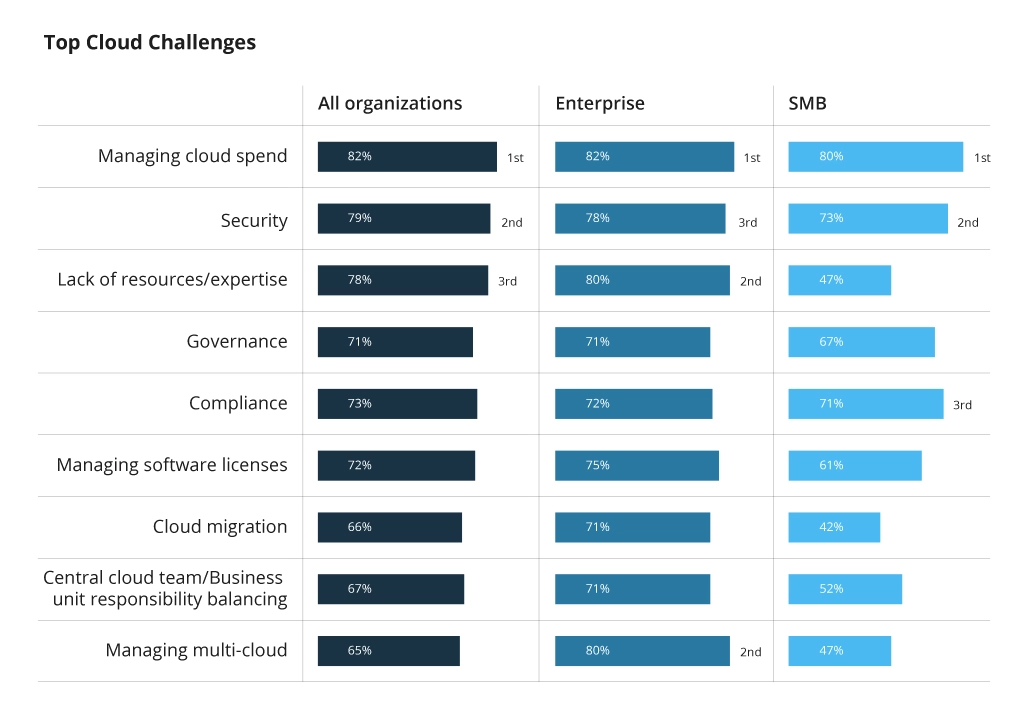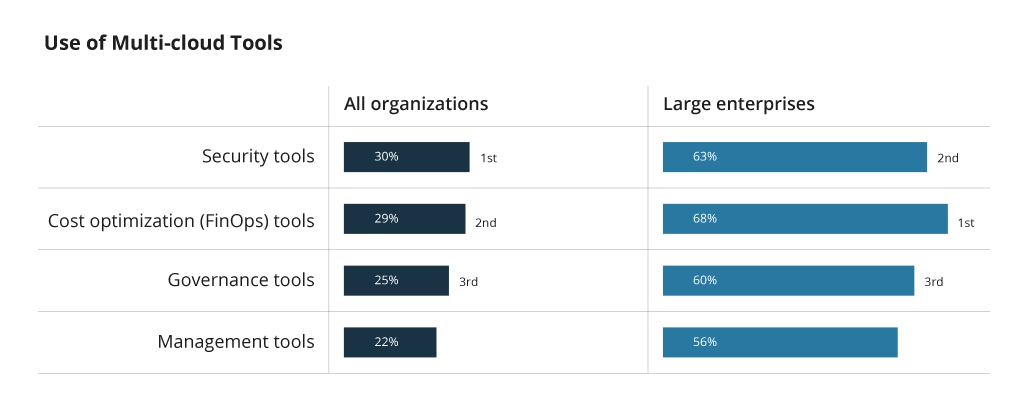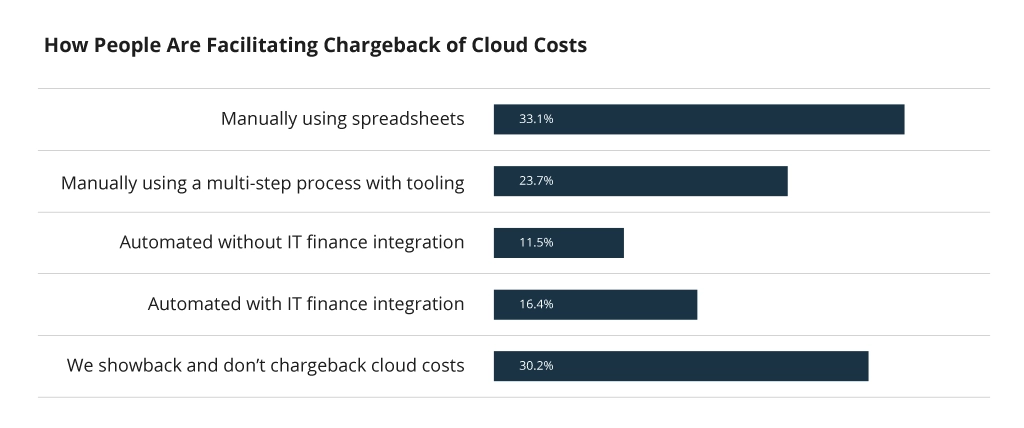Cloud FinOps: Why You Need It and How to Get Started
In a landscape of constantly evolving cloud services, businesses are perpetually seeking innovative ways to cut costs. The undeniable trend of cloud adoption sees more companies migrating operations to the cloud each year. Recent data on the present economic situation indicates that 41.4% of worldwide IT and business leaders aim to increase their investment in cloud-based offerings.
However, as organizations embrace the cloud, they face numerous challenges in managing and optimizing cloud costs.
Traditional cost management models fall short in the dynamic cloud environment, necessitating an adaptive approach. This is the situation where cloud Financial Operations (FinOps) are useful. Coined by the FinOps Foundation, cloud FinOps is a framework that combines systems, best practices, and culture to enhance the financial performance of cloud services.
Find out more about Optimizing Cloud Costs with FinOps
Why Adopting FinOps Makes Sense
Assessing the need for FinOps goes beyond immediate cost concerns — it's a strategic necessity demanding a comprehensive analysis of short-term challenges and long-term benefits.
The essence lies in recognizing FinOps as a transformative force over an extended timeframe. While initial project costs may present challenges, FinOps turns out to be a smart investment that can outperform implementation expenses over 3 years — the average time it takes for cloud investments to pay back. It signifies a cultural shift, emphasizing operational efficiency, resource optimization, and overall business value.
At its core, FinOps allows making strategic decisions today for sustained success tomorrow. By calculating long-term benefits against implementation costs, organizations grasp the significant value that FinOps brings.
Key considerations about FinOps:
- FinOps isn't a last-minute solution — it's a calculated decision that arises during cost reviews or brainstorming sessions. Its efficacy is particularly pronounced in large enterprises, where the potential for errors impacting costs and leading to losses is more significant. In large enterprises, FinOps is a leading approach among multi-cloud tools. However, FinOps proves beneficial for organizations of any size having a clear understanding of the problems it aims to solve.
- The need for implementing cloud FinOps doesn't emerge from a disaster — it's often identified during proactive cost reviews or strategic discussions. Rather than a reactive measure, FinOps is about preventing financial inefficiencies before they turn into a real problem. Nevertheless, FinOps incorporates a responsive strategy, such as identifying inefficiently spent money on cloud objects. Yet, being proactive could give the company more benefits.
- Large organizations may find cultural changes associated with the transition to a FinOps approach challenging due to established processes, but the benefits of FinOps – feedback loop minimization, cloud ROI increase, and cost accountability – make it a crucial consideration. A compelling statistic reinforces the growing recognition of FinOps' importance – 72% of organizations currently have dedicated FinOps teams.
How to Predict FinOps Impact in the Long Term?
Quantifying the long-term impact of FinOps in the dynamic cloud landscape can pose a complicated task for organizations. Unlike legacy systems, cloud computing necessitates a more sophisticated way of result measurement due to its dynamic nature.
To navigate this challenge, organizations are advised to move beyond relying solely on historical data. Engaging in hypothetical scenarios, such as considering the impact of not optimizing in FinOps, provides a valuable perspective on potential cost savings and operational efficiencies. While hypothetical scenarios may seem speculative, they offer smart insights into the unseen value of FinOps investments.
For instance, effective FinOps utilization can lead to a 20% to 30% reduction in cloud costs, quantifying both financial impact and operational enhancements. Also, 78% of organizations agree that cutting cloud costs can contribute to the bottom line. Beyond cost savings, FinOps contributes to better resource utilization and more agile decision-making in the cloud environment.
Transitioning to the broader perspective, the long-term impact of FinOps is best understood through a dynamic interplay between historical data, forward-looking hypotheticals, and a keen understanding of cloud dynamics. As organizations continue their FinOps journey, this forward-thinking approach becomes a compass, guiding them through the shifting sands of cloud.
Roadmap for Adopting FinOps
Crafting a roadmap for FinOps implementation involves practical, strategic steps tailored to your organization's goals. Here's a streamlined guide on how to implement cloud FinOps in your enterprise:
1. Define Clear Goals
Initiate the FinOps journey with a crystallized definition of your objectives. Whether the aim is to optimize resources for a specific project or instigate a broader cultural shift within your organization, this clarity sets the tone for the entire FinOps roadmap.
2. Assess Current Financial Practices
Conduct a thorough examination of your organization's existing financial practices related to cloud usage. Identify areas where cost management can be improved. Real-world challenges, such as the revelation that only 13% of companies accurately distribute 75% of their cloud costs, underscore the necessity for this in-depth evaluation.
3. Implement Cost Allocation Strategies
Develop and implement robust cost allocation strategies to accurately track and attribute cloud costs to various departments or projects. Following the assessment, the cost allocation phase aligns infrastructure with the organization’s FinOps goals. It addresses concerns identified during the assessment, such as the 60% of professionals who discovered their cloud bills had exceeded expectations. This phase extends beyond simple cost-cutting, representing an adaptable approach grounded in insights obtained during the assessment.
4. Embrace Chargeback
In 2022, 48% of organizations stated to use chargeback to allocate cloud costs, assigning expenses to departments based on resource usage. This practice enhances budget clarity, fosters responsible resource consumption, and aligns activities with budget constraints. Typically, manual processes, often involving spreadsheets, are employed for chargeback implementation.
5. Integrate Showback Practices
Introduce showback practices to raise financial awareness and transparency in your organization. Showback serves as an educational tool that encourages responsibility and informed decision-making by presenting detailed cost breakdowns to departments without invoicing. It fosters an understanding of how resources contribute to costs, allowing departments to grasp the financial impact of cloud usage without directly affecting budgets. Showback proves especially useful in the early stages of FinOps, building awareness before transitioning to the more impactful chargeback model. These insights empower departments to make informed decisions, promoting a proactive approach to cost management.
To sum up, chargeback and showback are vital components of the FinOps framework, providing a strategic toolkit for navigating cloud finances. Chargeback ensures precision, while showback catalyzes transparency and visibility. This creates a FinOps mindset that values being responsible with funds as well as running operations efficiently.
Chargeback
Showback
Assigns costs to departments for cloud resources
Details cost breakdowns to departments without invoicing
Enhances budgeting clarity with specific cost allocations
Promotes transparency in resource-to-cost understanding
Promotes responsible resource use through financial awareness
Educates departments on financial impact without actual charges
Demands meticulous resource tagging for accurate cost breakdowns
Precedes chargeback, enabling informed decisions and responsible resource management
6. Foster Continuous Optimization
Establish a culture of continuous optimization by regularly reviewing and adjusting your FinOps practices. Regular assessments and adjustments ensure that your FinOps practices remain aligned with evolving business needs. By incorporating this step into your FinOps roadmap, you can ensure a more informed and data-driven approach to implementing financial operations best practices within your organization.
Final Thoughts
Cloud FinOps is a flexible option that meets both short-term financial needs and long-term strategic goals in the cloud. As interest in cloud investment is growing globally, FinOps becomes a strategic must-have. It puts a lot of weight on being adaptable, precise, and dedicated to constant improvement. This helps businesses manage their cloud-based costs in the best way possible.
![Cloud FinOps Implementation Roadmap [MB]](https://www.infopulse.com/uploads/media/banner-1920x528-cloud-finops-why-you-need-it-and-how-to-get-started.webp)






![Cloud Native vs. Cloud Agnostic [thumbnail]](/uploads/media/thumbnail-280x222-cloud-agnostic-vs-cloud-native-architecture-which-approach-to-choose.webp)


![FinOps: Key Principles and Benefits [thumbnail]](/uploads/media/thumbnail-280x222-cloud-cost-optimization-with-finops.webp)
![Benefits of Cloud-Agnostic Strategy [thumbnail]](/uploads/media/thumbnail-280x222-cloud-agnostic-strategy-whats-in-and-how-to-act-to-get-tangible-business-value.webp)
